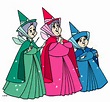
Disney’s fairies, Fauna, Flora, and Merryweather. I get why Merryweather is clad in blue (sky–weather), but it seems like Flora should have on green (even though some flowers *are* pink), since she represents plant life, and Fauna should have on, maybe, brown? There’s not really one color that represents animal life. I don’t know; it just seems confusing for her to be wearing green.
When I was a third-grader, a new Disney movie came out. Sleeping Beauty. Back in those olden days, animated movies didn’t come out every few weeks, like they seem to now. Kids had to wait for those Disney movies. Sleeping Beauty featured, among other characters, three fairies. (I was going to say “magical fairies,” but it seems that, by definition, all fairies are magical.) The Disney fairies are Flora, Fauna, and Merryweather. I thought those were just cute names, not having had enough science yet to know what flora and fauna meant. (Merryweather can refer to family surnames, musical groups, a fictional private security corporation from video game, and a Victorian firefighter’s helmet.)
Anyway, a couple of weeks ago, I wrote about the lush flora in Tennessee and North Carolina and West Virginia.
This week, I have something to say about some of the fauna I ran into.
First, and I’ve probably mentioned this before, my mother-in-law lives on a hill outside Sevierville, Tennessee. She has a lovely sun room that looks out onto a nice deck and the Smoky Mountains. She has a bird feeder and many different kinds of birds come along during the day for snacks. From late spring into the fall, she also has a pair of, yes, pea fowl. (We think they’ve escaped from the Petting Zoo ‘way, ‘way down the hill. Maybe they go back there during the wintry weather, but they always come back to spend the summer with her.)
- I’ve mentioned before that a pair of peacocks come and spend the spring and summer on my mother-in-law’s deck.
- Peter likes watching the peacock, but is too young to realize that most little kids can’t go off to visit their great-grandmas and get this close to a real peacock.
- This is what a fanned out peacock tail looks like from the rear. You don’t get to see that quite as often.
- The male peacock is a proud and jealous guy, and will preen and strut when he notices that *other* male peacock on the deck (his own reflection).
While we were in Tennessee, Kevin and April and Peter came from Fort Worth, and Jeremy and Sarah came from Brooklyn. One morning, Jeremy came in, after a shower, and said he’d found a couple of bugs in the bathroom that we were also using. “They were in the empty toilet brush holder,” he said. “I got them out and put them on the floor, just outside the bathroom. One wasn’t doing too well, but the other one was fine. It went down the air conditioner grate.” He had thrown the dead one away.
He recognized them, though. They were House Centipedes, and he said they’d found some in their apartment in Brooklyn, when they first moved in. The things are so awful looking (one description actually says “hideous”), that Jeremy and Sarah killed them immediately. And later found out that House Centipedes are some of the most helpful, desirable of all crawly things. They eat the things you really don’t want, like mites and BED BUGS, sometimes a real issue up there in Brooklyn. So, House Centipedes are wonderful things to find, but I’m telling you, they look like they would KILL you and eat you ALIVE if they got anywhere near you. So, if you’d like to see them, here’s a link to House Centipedes. I’m afraid to put it here, in case you’re queasy about that sort of thing.
Last year, when we went to West Virginia to visit my cousin Nancy, we went to Antietam Battlefield. But the cemetery was closed the day we were there. This year, we happened to be driving by, and Nancy remembered that we hadn’t been able to go and suggested that we stop. There was an unexpected fauna encounter there.
- The first time we went–CLOSED!
- Open the next time-this was once the caretaker’s lodge. Now it houses the cemetery’s administrative offices
- Soldiers are grouped by state (or “unknown”), and this map identifies each area.
We parked on the street and walked up on the bricked area and stopped to look at the map. Then, the instant we stepped from the bricks to the grassy area, there was an astonishing assault of … I. Don’t. Know. What!
There was a swarming of tiny, tiny somethings. Gnats maybe? They were all around; I felt almost engulfed. “WHAT ARE THESE THINGS!” I yelled to David, who was somehow able to repel the things. I walked all around, for a few minutes, with my arms in front of my face.
The next day, we drove back to Tennessee. Well, David drove. I read and knitted and snoozed … and scratched at my arm a little bit. Back at David’s mom’s, I finally actually looked at my arm. There were spots. I went to the bathroom. Both forearms were covered, only on the undersides (the parts facing away from me as I walked through the cemetery), by red spots. Itchy, red spots. I took a photograph of one arm and sent it to Jeremy (the bed bug expert) to ask his opinion. Probably not, he said. They weren’t chiggers, because there were a couple of bites on my ankles, but not anywhere near as many as on my arms, and chiggers are grass-dwellers, and I had not been rolling in the grass. Not poison ivy, because I know what that looks like!
“It must have been those gnat things at Antietam,” I said to David. “Gnats don’t bite,” he said. “Well, they weren’t mosquitoes. I could hardly see them!” Whatever they were, their bites were itchy, itchy, itchy, and I went to Walgreen’s and bought itch cream.
- Here is what they looked like when I found them.
- Here is what they looked like TWO WEEKS LATER!!!
- I googled “gnats” and found lots of photos of all kinds of gnats. I also found this, which I guess was with the gnat pictures because it’s a photo of gnat bites. It looks suspiciously familiar, doesn’t it.
- This is *not* what the Antietam gnats looked like, but this is what they *felt* like
I had an appointment with my podiatrist a couple of weeks ago. I said, “I know you’re a foot doctor, but how does this look to you?” She said, “It doesn’t look infected.” Good. “It looks like an allergic reaction.” Oh, that does make sense. Maybe I’ve never been bitten by the West Virginia sort of gnat. Anyway, it could have been worse–infected and itchy. I can still see them, even today, but they’ve faded a whole lot and don’t itch any more. Meanwhile, I looked up “gnats,” and here’s information straight from the Orkin website.
Appearance
Gnats typically are small and long-legged insects. They often are weak fliers.
Behavior, Diet & Habits
Gnat is the common name for many small, winged insects in the fly grouping. Contrary to popular belief, these tiny flying insects are not “babies,” they are adults. The tiny flying insects that many people call “gnats” could really be fruit flies or fungus gnats. Depending on species, gnats can be biting or nonbiting and will feed on plants, other insects or blood. (Italics mine)
Reproduction
For some species, males assemble in large mating swarms known as ghosts. These swarms occur most commonly at dusk in large fields (italics mine) and above streets. Depending on the species, gnat eggs are laid on land or water. Larvae may be immobile or capable of movement by way of rocks and water plants. Adults range in size but usually are no larger than 33 mm. The larval and adult stages of the gnat are considered both beneficial and detrimental. Some species are excellent plant pollinators and feed on crop pests such as aphids and scales. Other gnats, such as the Hessian fly, are crop pests themselves.
Females of some species, such as the black gnat or black fly, feed on blood (italics mine again). These gnats have been known to carry parasites and spread diseases to humans and livestock. Due to the spread of river blindness and other health concerns, numerous programs have been established throughout the world to control gnat populations.
Signs of a Gnat Infestation
(This is my favorite part) The main sign of gnats are the sightings of the adults as they fly about in the air. (Ahhh. That *does* explain things.)
God spoke: “Earth, generate life! Every sort and kind:
cattle and reptiles and wild animals—all kinds.”
And there it was:
wild animals of every kind,
Cattle of all kinds, every sort of reptile and bug.
God saw that it was good.
Genesis 1:24-25 (The Message)
And I do plan to ask God, when I have the opportunity, to explain this particular why? to me. I’m interested to know.

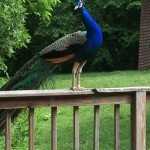
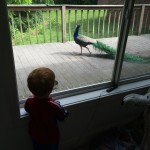
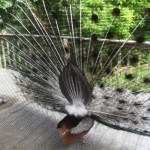
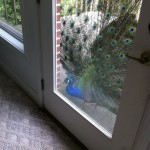

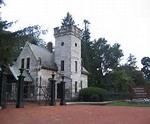
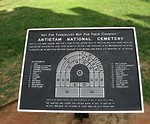
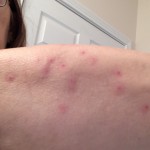
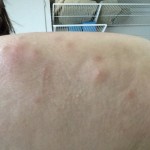
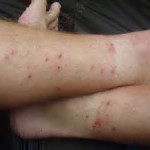
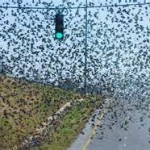
So sorry about your bites. I know about gnats, especially the black fly type, from my childhood up north. My father once told me (but not until well after I had children of my own) that the only time in his long life he smoked cigarettes was during the summer he spent in the northern Adirondacks, in order to keep the black flies a little distance away from biting vicinity.
So sympathetic…I hate itching! and for two weeks? Yuck! Next time in the area, maybe some OFF would be advisable. Hope being better prevails! Love to all, Suzy